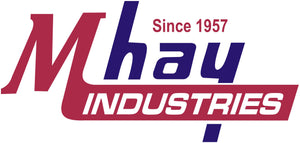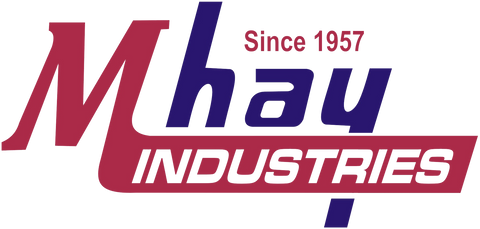The Evolution of Veterinary Tools Over the Years
Recent Post
Archive
- December 2023
-
- The Veterinary Tools Revolution: A Journey Towards Advanced Animal Care
- Mhay Industries: A Testament to Quality and Innovation in Veterinary Tools
- A Look Behind the Scenes: How Mhay Industries' Tools are Made
- Expanding Your Veterinary Practice: Essential Tools in Your Arsenal
- The Role of Proper Equipment in Successful Small Animal Surgeries
- Global Recognition: Mhay Industries' Veterinary Tools Trusted Worldwide
- Veterinary Tools: A Comprehensive Buying Guide
- Animal Health and Welfare: Essential Tools in Handling Small Animals
- The Impact of Quality Tools on Your Veterinary Practice
- The Role of Veterinary Tools in Animal Rescue Centers

The Evolution of Veterinary Tools Over the Years
Dec 16, 2023
In the ever-evolving landscape of veterinary medicine, the tools at the disposal of veterinarians have undergone a remarkable transformation. From humble beginnings to cutting-edge innovations, the evolution of veterinary tools reflects a commitment to enhancing the well-being of our animal companions. In this blog post, we take a fascinating journey through time, exploring the milestones that have shaped the evolution of veterinary tools.
1. Ancient Tools:
The roots of veterinary medicine can be traced back to ancient civilizations where simple tools were employed for basic animal care. These tools, often crafted from primitive materials, were used for tasks such as wound care, dental procedures, and rudimentary surgeries.
2. The Middle Ages:
As societies advanced, so did the tools used in veterinary practices. During the Middle Ages, specialized tools for farriery and equine dentistry emerged. The understanding of animal anatomy and the need for more intricate instruments led to the development of tools tailored to specific veterinary tasks.
3. 19th Century: The Rise of Scientific Veterinary Medicine:
The 19th century marked a pivotal era with the rise of scientific veterinary medicine. Tools evolved alongside advancements in medical knowledge. Instruments for surgical procedures, diagnostic examinations, and more specialized treatments became more sophisticated as veterinarians sought to apply scientific principles to animal care.
4. 20th Century: Technological Advancements:
The 20th century brought unprecedented technological advancements that revolutionized veterinary tools. X-rays became a standard diagnostic tool, allowing veterinarians to visualize internal structures. Anesthesia and aseptic techniques improved, paving the way for more complex surgical interventions.
5. Late 20th Century: Minimally Invasive Techniques:
In the latter part of the 20th century, minimally invasive techniques gained prominence in veterinary medicine. Endoscopes and laparoscopes allowed for less invasive procedures, reducing trauma and improving patient recovery times. This era also saw the integration of more specialized diagnostic tools, such as ultrasound machines.
6. 21st Century: Robotics and Advanced Imaging:
The 21st century ushered in a new era of veterinary tools with the integration of robotics and advanced imaging technologies. Robotic surgical systems provided veterinarians with unprecedented precision and control, while high-resolution imaging tools like CT scans and MRIs enhanced diagnostics and surgical planning.
7. Present Day: Customization and Smart Instruments:
Today, veterinary tools continue to evolve with a focus on customization and smart technology. 3D printing allows for the creation of patient-specific instruments and implants, optimizing fit and functionality. Smart instruments with integrated sensors provide real-time feedback, enhancing the safety and precision of surgical procedures.
Conclusion: A Promising Future for Veterinary Tools:
The evolution of veterinary tools reflects the dedication of veterinary professionals to advancing the field and improving the quality of care for animals. As we look to the future, the trajectory of innovation in veterinary tools holds exciting possibilities. From advancements in biocompatible materials to the integration of artificial intelligence, the ongoing evolution of veterinary tools promises to shape a future where veterinary care is more precise, efficient, and tailored to the unique needs of each animal patient. Stay tuned as we continue to witness the remarkable journey of veterinary tools unfolding before us.
1. Ancient Tools:
The roots of veterinary medicine can be traced back to ancient civilizations where simple tools were employed for basic animal care. These tools, often crafted from primitive materials, were used for tasks such as wound care, dental procedures, and rudimentary surgeries.
2. The Middle Ages:
As societies advanced, so did the tools used in veterinary practices. During the Middle Ages, specialized tools for farriery and equine dentistry emerged. The understanding of animal anatomy and the need for more intricate instruments led to the development of tools tailored to specific veterinary tasks.
3. 19th Century: The Rise of Scientific Veterinary Medicine:
The 19th century marked a pivotal era with the rise of scientific veterinary medicine. Tools evolved alongside advancements in medical knowledge. Instruments for surgical procedures, diagnostic examinations, and more specialized treatments became more sophisticated as veterinarians sought to apply scientific principles to animal care.
4. 20th Century: Technological Advancements:
The 20th century brought unprecedented technological advancements that revolutionized veterinary tools. X-rays became a standard diagnostic tool, allowing veterinarians to visualize internal structures. Anesthesia and aseptic techniques improved, paving the way for more complex surgical interventions.
5. Late 20th Century: Minimally Invasive Techniques:
In the latter part of the 20th century, minimally invasive techniques gained prominence in veterinary medicine. Endoscopes and laparoscopes allowed for less invasive procedures, reducing trauma and improving patient recovery times. This era also saw the integration of more specialized diagnostic tools, such as ultrasound machines.
6. 21st Century: Robotics and Advanced Imaging:
The 21st century ushered in a new era of veterinary tools with the integration of robotics and advanced imaging technologies. Robotic surgical systems provided veterinarians with unprecedented precision and control, while high-resolution imaging tools like CT scans and MRIs enhanced diagnostics and surgical planning.
7. Present Day: Customization and Smart Instruments:
Today, veterinary tools continue to evolve with a focus on customization and smart technology. 3D printing allows for the creation of patient-specific instruments and implants, optimizing fit and functionality. Smart instruments with integrated sensors provide real-time feedback, enhancing the safety and precision of surgical procedures.
Conclusion: A Promising Future for Veterinary Tools:
The evolution of veterinary tools reflects the dedication of veterinary professionals to advancing the field and improving the quality of care for animals. As we look to the future, the trajectory of innovation in veterinary tools holds exciting possibilities. From advancements in biocompatible materials to the integration of artificial intelligence, the ongoing evolution of veterinary tools promises to shape a future where veterinary care is more precise, efficient, and tailored to the unique needs of each animal patient. Stay tuned as we continue to witness the remarkable journey of veterinary tools unfolding before us.
Manufacturers & Exporter of Equine Dental Tools , Farrier Tools & Small Animal Dentistry.
- Circular Road , Sialkot - Pakistan
- info@mhayindustries.com
Information
My Account
Newsletters
Copyright © Mhay Industries 2024 All Rights Reserved.





